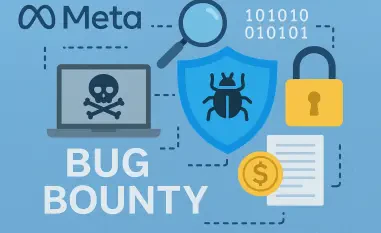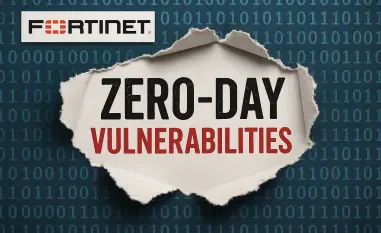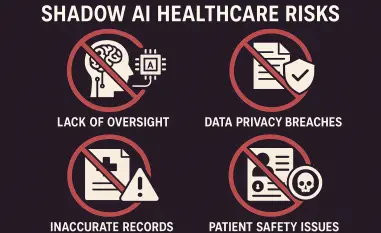In today’s fast-evolving digital landscape, cybersecurity has transcended its traditional role of threat mitigation to become a cornerstone in building trust, facilitating innovation, and safeguarding long-term business success. Successfully aligning cybersecurity initiatives with overarching business objectives requires a strategic approach, beginning with an understanding of organizational goals and identifying potential risks. It also involves evaluating how security measures can be seamlessly integrated into these ambitions. Modern enterprises must cultivate cybersecurity strategies influenced by business priorities and actual threats, utilizing frameworks like the National Institute of Standards and Technology (NIST) Cybersecurity Framework (CSF) for clarity and adaptability. This guide explores actionable steps to construct a future-ready cybersecurity program that not only deflects challenges but also aligns perfectly with business aspirations and demands.
1. Understanding Business Trajectory and Collaborating with Leadership
Achieving cybersecurity alignment with business goals starts with a deep understanding of strategic direction and thorough collaboration with executive leadership, particularly the Chief Information Officer (CIO). It is imperative to grasp where the business is headed and how technology is expected to support the projected journey. Initial engagement with the CIO and other senior leaders is critical, as it provides insights into priorities, modernization efforts, and technological investments. Questions posed during these discussions should seek to uncover top organizational priorities for the coming months, which business capabilities are being upgraded or launched, and the extent of investments in cloud services, artificial intelligence, automation, and digital experiences, as well as dependencies including vendor relationships and data platform utilization.
This step requires more than a transient interaction; it is foundational in establishing long-term partnerships where security professionals enjoy substantial involvement early in the planning stages. When controls are integrated proactively, they contribute value, steering clear of scenarios where they may inadvertently cause friction. By positioning cybersecurity strategies to support business objectives from the outset, organizations can ensure that security efforts are symbiotic with strategic ambitions, establishing a solid baseline for subsequent steps.
2. Gathering Comprehensive Threat Intelligence
After identifying business goals, it’s essential to delve into understanding potential threats that could compromise these objectives. Effective threat intelligence collection plays a pivotal role in pinpointing risks within the organization’s operational ecosystem. Various sources can be leveraged to acquire credible, real-time intelligence, including global vendors like Verizon, CrowdStrike, and Mandiant, along with threat-sharing communities, industry reports from ISACA, and internal resources from incident response, penetration testing, and red team exercises.
The aim is to discern patterns and identify specific vulnerabilities adversaries may exploit, such as targeting APIs, misconfiguring identity systems, or probing third-party integrations. Ransomware attacks exploiting unpatched cloud settings or phishing attempts against end users are common focal points for threat actors. Understanding these strategies enables the translation of abstract threats into tangible business risk scenarios, mapping precisely how adversaries could disrupt essential services. This connection between external threat evaluations and internal organizational priorities empowers security programs to anticipate and mitigate risks methodically, aligning cybersecurity measures closely with business objectives.
3. Selecting the Appropriate Security Framework
Transitioning into effective cybersecurity implementation demands choosing a framework that provides structural support for mitigation efforts based on organizational insights into its business goals and threat landscape. The NIST Cybersecurity Framework (CSF) serves as a robust foundation, as it is widely adopted, offers flexibility, and segments security activities into five main functions: Identify, Protect, Detect, Respond, and Recover. The Identify function focuses on understanding organizational assets, governance, and dependencies, facilitating a comprehensive grasp of what needs protection. Protection measures safeguard data, handling access and identity processes securely. Detection systems monitor anomalies, ensuring timely intervention during cyber incidents. Respond and Recover functions guide effective risk containment and restoration of capabilities following disruptions.
Initial steps involve developing a Current Profile, an honest assessment reflecting the organization’s standing across each framework function, followed by defining a Target Profile that embodies optimal security practices based on business needs and risk management inclinations. Establishing these profiles facilitates identification of gaps, laying out a roadmap for improvement. Linking security initiatives directly to business goals via a trusted framework ensures cybersecurity efforts reinforce and enable strategic ambitions rather than imposing obstacles.
4. Implementing Controls to Address Gaps
Frameworks provide essential guidance, but genuine progress manifests through the implementation of actionable controls that fill identified gaps between current and target profiles. The selection of controls must resonate with the organization’s maturity, complexity, and specific regulatory obligations. Resources such as NIST 800-53 can offer detailed controls tailored for federal standards, while CIS Controls prioritize impactful and pragmatic actions. ISO/IEC 27001 delivers global standards suitable for certifications, facilitating broader transformation efforts.
Focus should be maintained on deploying controls that protect critical assets and enable business goals rather than pursuing an exhaustive approach that may dilute attention across less impactful areas. Giving precedence to essential controls helps maintain organizational integrity and align cybersecurity measures with core business objectives. A bespoke selection and implementation strategy ensures that controls actively support business ambitions while providing robust protection against evolving threats.
5. Establishing a Realistic Timeline and Setting Milestones
Cybersecurity transformation demands patience and deliberate planning, given that substantial changes do not materialize overnight. Following the creation of target profiles, establishing a coherent implementation plan that balances urgency with organizational capacity is crucial. Initiatives can be segmented into manageable waves, organized by quarterly objectives, distinct business units, or specific control domains, accompanied by clear ownership and budgetary allocations.
Defining milestones that exhibit tangible progress and tie achievements to risk mitigation or business enablement objectives is vital. Some milestone examples include deploying multi-factor authentication for sensitive users, completing thorough risk assessments for critical third-party partners, or initiating employee campaigns focused on phishing awareness. Automation of vulnerability scanning processes for cloud assets further exemplifies advancement in cybersecurity implementation. Each milestone should highlight contributions towards organizational robustness and enhanced business facilitation rather than representing mere technical adjustments.
6. Prioritizing Progress Evaluation and Purposeful Reporting
To sustain ongoing momentum and accountability, the efficacy of cybersecurity programs must be measurable, with progress clearly visible to relevant stakeholders, including leadership. Utilizing dashboards to display advancements toward target profiles, current risks, planned mitigation efforts, and key metrics across personnel, processes, and technology assurances is key. Metrics focused on risk posture, threat visibility, resilience readiness, and engagement levels provide comprehensive insights into program performance.
Effective reporting transcends technical intricacies by presenting information that promotes clarity and understanding among leadership, driving internal alignment and strategic cohesion. Dashboards double as tools not only for presenting data in boardroom discussions but for fostering organizational engagement and visibility throughout departments, ensuring consistent application of the security program aligned with business goals.
7. Committing to Continuous Improvement
Finally, understanding cybersecurity as a dynamic, ongoing commitment rather than a static, one-time initiative is paramount. The evolution of business processes, threat landscapes, and technology stacks necessitates regular reassessment of cybersecurity profiles and proactive adjustments. Feedback loops, revisiting the NIST CSF profile annually or after significant business shifts, and incorporating insights from incident post-mortems, audits, and stakeholder feedback facilitate adaptation and maturity within security programs.
Cybersecurity flourishes when embraced as a journey comprised of iterative enhancement, sustained engagement, and responsive adaptation, ensuring protection strategies remain relevant and effective amidst continuous change. This commitment encourages resilience and agility, empowering organizations to navigate challenges and maintain cohesion between strategic objectives and security priorities.
Enabling Strategic Growth Through Security
To align cybersecurity with business objectives, it’s crucial to fully understand the company’s strategic goals through close collaboration with top executives, especially the Chief Information Officer (CIO). Recognizing the business’s future direction and how technology aids in that progress is essential. Engaging with the CIO and other key leaders is vital for gathering insights on priorities, modernization efforts, and tech investments. During these interactions, it’s important to investigate high-priority objectives for the upcoming months, improvements or new business capabilities, and investments in areas like cloud services, AI, automation, and digital experiences. Considerations should also include vendor relationships and data platform use.
This process requires more than brief interactions; it lays the groundwork for long-term partnerships where security experts are integrally involved early in planning. By embedding controls early, they add value without causing friction. Aligning cybersecurity with business goals from the beginning ensures security measures support and enhance strategic ambitions, forming a firm basis for future initiatives.













